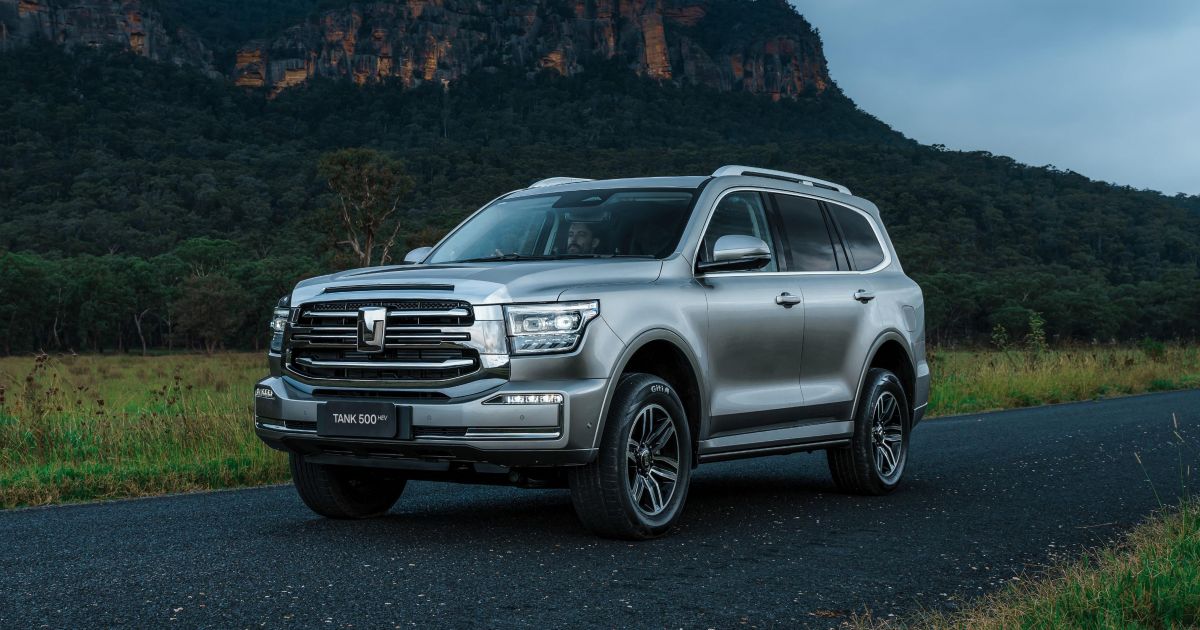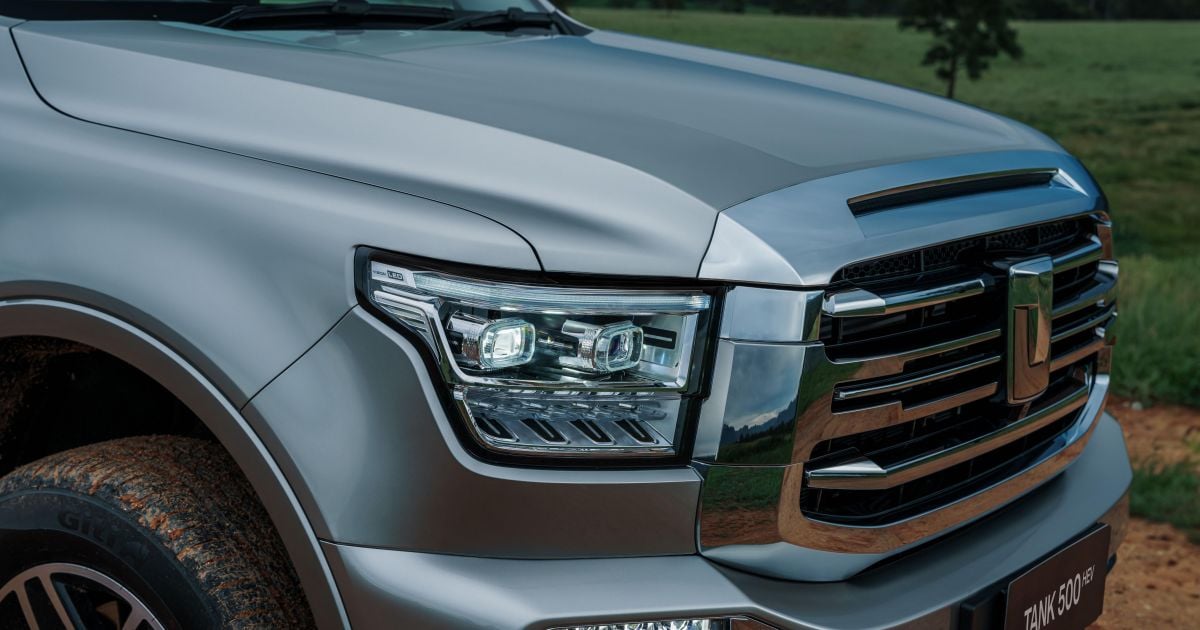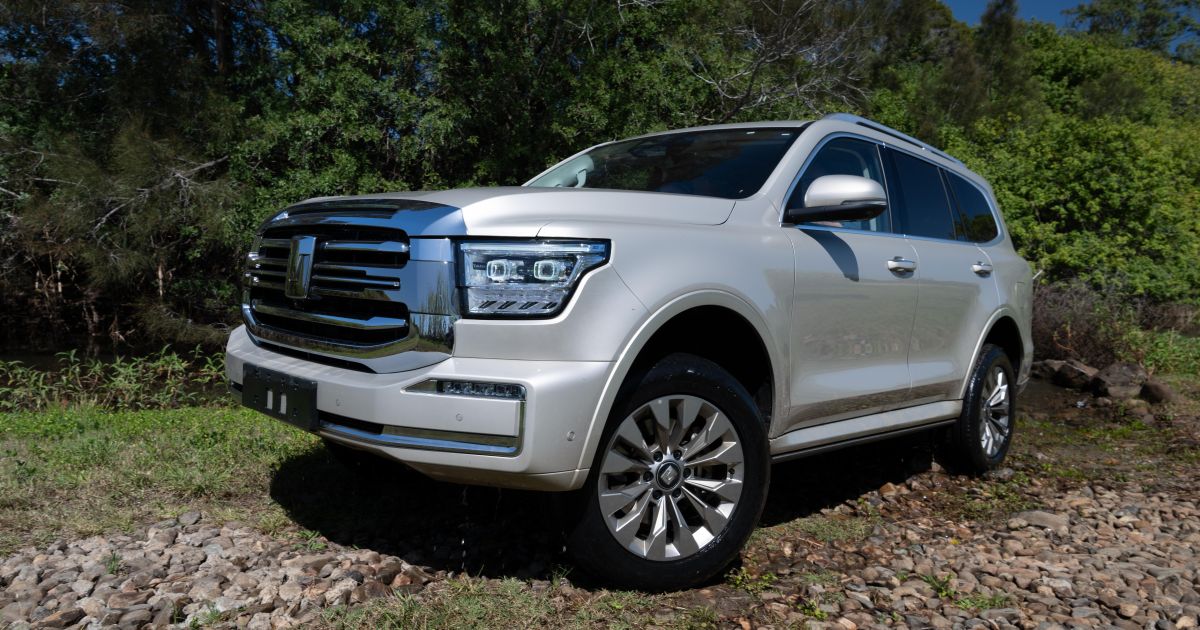
2025 GWM Tank 500 gets fresh face following software, suspension upgrades
Here’s one for the carspotters – the GWM Tank 500 now has a new grille.
The large off-road SUV now wears a “redesigned front sports grille” borrowed from the Chinese-market Tank 500 Hi4-T plug-in hybrid (PHEV), with fewer (but chunkier) horizontal slats.
The visually updated but still chrome-heavy Toyota Prado rival entered production in April 2025, and the change in front-end styling doesn’t affect the SUV’s ANCAP rating.
In fairness to GWM Australia, it’s done more than simply change out the grille since launching the Tank 500 here in March 2024.
Hundreds of new car deals are available through CarExpert right now. Get the experts on your side and score a great deal. Browse now.
The Tank 500 received recalibrated software in December 2024, including for active safety and driver assist systems such as the adaptive cruise control and emergency lane-keep assist.
Other software changes were made to improve throttle response, as well as transitions between petrol and electric power.
These changes were made available to existing Tank 500 owners.
A revised suspension tune was quietly introduced in vehicles that arrived from late in the third quarter of 2024, with a move from Chinese to Thai market suspension tune aimed at improving its dynamics and composure on the road.
The Tank 500 hybrid now looks more like its Chinese-market Hi-4T sibling, and GWM has already confirmed a PHEV option is coming to the local lineup during the third quarter (July to September) of 2025.
GWM has, however, stopped short of confirming whether it’ll be the Hi-4T or Hi-4Z.
Both are based around the same 2.0-litre turbocharged four-cylinder petrol engine but where they differ is in packaging, design and – according to GWM – off-road capability.
The Tank 500 is the first vehicle to use GWM’s Hi4-Z system, introduced in China in January 2025 with claims of superior off-roading capability over the Hi4-T design.
Running a 185kW/380Nm version of the 2.0-litre engine combined with two electric motors – one on each axle – combined peak power is 635kW and 1195Nm.
The Hi4-Z PHEV package uses multi-link rear suspension and positions the battery pack between the front and rear wheels, allowing GWM to fit varying battery sizes to Hi4-Z vehicles.
New grille (left), old grille (right)
In China, the Tank 500 Hi4-Z uses a 59.05kWh battery pack with a claimed 201km (WLTC) electric-only driving range and 1096km total range.
Further off-road advantages include both better weight distribution and the ability to place the battery in a ‘safer’ location to protect it in rough conditions.
The Hi4-T system is used in the Cannon Alpha PHEV and has the same total system outputs of 300kW/750Nm and a 37.1kWh battery pack in the Tank 500 PHEV.
Compared to the Hi4-Z, the Hi4-T (pictured below) has a fixed layout which means the battery has to be placed below the rear boot area, reducing cargo space and limiting the physical size of the battery.
While seemingly less capable than the Hi4-Z, the Hi4-T is still capable of water wading 800mm and has similar approach and departure angles to the current hybrid – albeit with its 223mm ground clearance being 11mm less.
The addition of the PHEV powertrain will see the Tank 500 beat the Prado and Ford Everest in offering a plug-in option, too – despite the Everest being based on the Ford Ranger, which will offer a PHEV powertrain from mid-2025.
Pricing and model grades are yet to be announced, but GWM Australia previously told CarExpert a PHEV version would attract an estimated premium of between $6000 and $15,000 over the current hybrid.
MORE: Everything GWM Tank 500




Leave a Comment